About Me
My research topic of interest during my PhD includes Robust Control, Human-robot interaction, Optimization, Model Predictive Control and Reinforcement Learning in Robotics. Throughout the past years, I have worked on multiple research projects surrounding the topic of Designing Integrated Strategies for Modularized Robotics/Mobility Systems including self-driving vehicle in Uncertain Environments. My current work focuses on Motion Planning, Behavior Planning, Fleet Management System in Autonomous Mobility.
Experiences
Senior Motion Planning Engineer
Dec. 2023 - Present · Motion Team · Autonomous Robot 24Hours 7Days (AR247)
- Specializing in developing cutting-edge motion planning algorithms from lightweight to heavy-duty AMR with steering-style mechanism that revolutionize delivery, security patrol, logistics, and warehouse operations. Expertise includes designing and implementing:
- Generated local trajectory planning strategies that ensure safe and efficient navigation.
- Designed Behavior Planning algorithms for robust/intelligent decision-making in complex environments.
- Optimized multi-robot coordination and task allocation in Fleet Management Systems for seamless operations.
Postdoctoral Researcher
Agu. 2021 - Dec. 2023 · Robotics & Mobility Lab. (RML) · Ulsan National Institute of Science and Technology (UNIST)
- Research in Motion Planning for Autonomous systems by Predictive Optimal control, Robust-Adaptive MPC and Reinforcement Learning carrying out maximized safety and efficiency under uncertain and time-varying environments.
- Propose a new planning algorithm based on the merits of sampling-based and optimization-based methods.
Postdoctoral Researcher
Sept. 2017 – Feb. 2021 · Fluid Power & Machine Intelligence Lab. (FPMI) · University of Ulsan (UOU)
- Focused on optimal-based and learning-based Reinforcement Learning for safe collaborative tasks of prioritized human‑robot interaction.
Postdoctoral Researcher
Sept. 2017 – Feb. 2021 · Fluid Power & Machine Intelligence Lab. (FPMI) · University of Ulsan (UOU)
- Focused on prioritized human‑robot interaction in teleoperation for safe collaborative tasks based on robust and optimal control strategies.
- Handled the time‑delay and data‑packet dropout issues utilizing a predictive control algorithm delivering to effectively address challenges within Network Control Systems.
- Enhanced the precision of control trajectory and force tracking in robotics by introducing a novel time‑varying adaptive optimal estimator.
- Developed renewable and sustainable energy system control projects (Fluid‑based Triboelectric Nanogenerator; Floating Offshore Wind Turbines) to optimize as well as maximize power captured.
Lecturer
Sept. 2015 – Jul. 2017 · Electrical and Electronic Engineering Dept. (EEE) · Thu Duc College of Technology (TDC)
- Lecture courses: Microprocessor Programming, Basic C/C++ Programming, Circuit Design, Power Electronics, Advanced control theory
Graduate Researcher and Teaching Assistant
Sept. 2014 – Jun. 2016 · Open Lab. · Ho Chi Minh City University of Technology and Education (UTE)
- Reception Robot: Designed platform and developed Path-Tracking Control (PID, Pure-Pursuit) and SLAM (RANSAC)
Technical Engineer
Sept. 2012 – Agu. 2014 · Automation 5S (closed)
- Took primary responsibility for the electrical tasks of the projects that I built up control box (hardware) and main control program (software) using PLC-HMI (Delta, Autobase, LS, Siemens, Mitsubishi), deployed as Auto Parking Car Systems at Bitexco Financial Tower, Lim Tower, HCMC Supreme People’s Court, etc. and Industrial Production Line in CSB Energy Technology Co., Ltd., GS Battery Vietnam Co., Ltd., Hyosung Viet Nam Co., Ltd.
Education
Ph.D. in Mechanical and Automotive Engineering
Sept. 2017 - Feb. 2021 · University of Ulsan (UOU)
M.S. in Mechatronics Engineering
Sept. 2014 - Jun. 2016 · Ho Chi Minh City University of Technology and Education (UTE)
Thesis: Reception Robot: SLAM and Motion control.
B.S. in Electrical and Electronic Engineering Technology
Sept. 2009 - Jul. 2013 · Ho Chi Minh City University of Technology and Education (UTE)
Thesis: Research of a Network System using XBEE communication and its applications.
Publications
Projects
Fleet Management System (FMS)
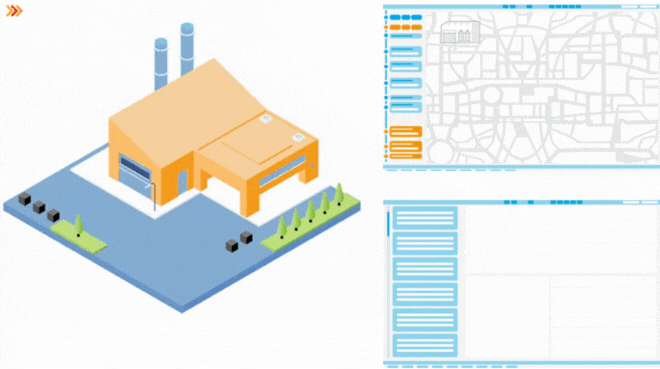
Autonomous Mobile Robot (AMR)
Beebot
Education Robot Platform (ERP42)
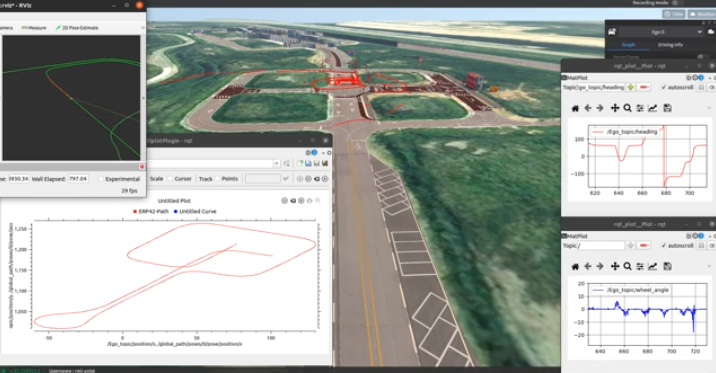
I worked with the Educational Robot Platform (ERP) developed by WeGo Robotics, which was integrated into the MORAI simulation environment for autonomous driving research and development. Using this platform, I implemented and tested core motion planning components, specifically:
- Local planning algorithms, enabling the robot to navigate dynamic environments with smooth and collision-free trajectories.
- Motion tracking and control logic, ensuring accurate path following and stability under varying conditions. To support development and evaluation, I published key planning and tracking data to ROS topics, allowing for real-time visualization, logging, and further analysis. This setup provided a practical and extensible environment for experimenting with and validating autonomous driving algorithms on a compact, education-oriented platform.
On The Way Env. (OTW)
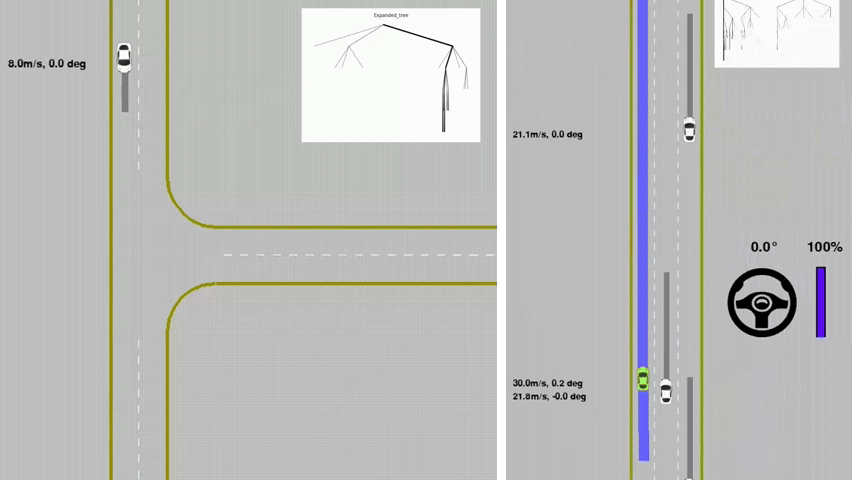
Human-Robot Teleoperation (HRT)

Human-Robot Teleoperation (HRT) is the focus of my Ph.D. thesis project, developed using MATLAB and supported by a series of published research works. It aims to establish a reliable and responsive teleoperation framework that balances both human control and robotic autonomy. The project addresses four key aspects:
- Robustness: Stable performance despite uncertainties from the operator, environment, or sensors.
- Performance: Effective task execution with speed and accuracy.
- Perception: Enhancing the operator’s awareness of the remote environment.
- Transparency: Accurately reflecting the environment and robot state to the operator. To find further details in my thesis defense presentation available in the Education section.
Variable Stiffness Actuator (VSA)
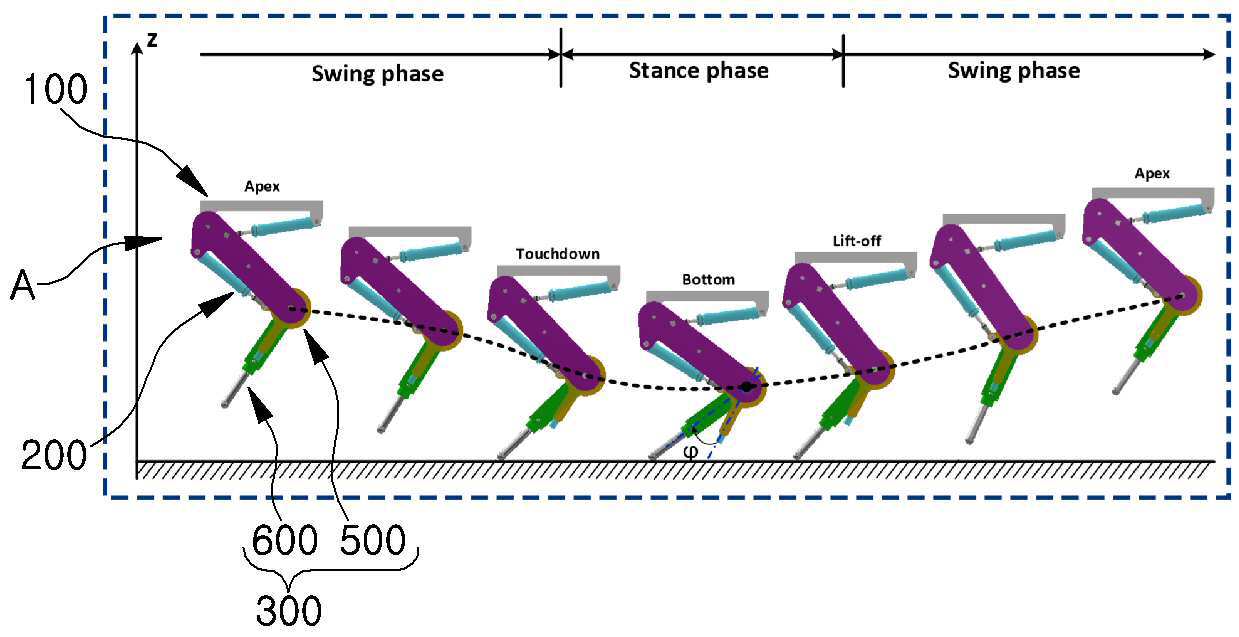
This project designs and controls a Variable Stiffness Actuator (VSA) for quadruped robot legs to enhance adaptability, shock absorption, and energy efficiency. The VSA consists of two actuators: one controls joint position, the other adjusts stiffness by modulating an elastic element. This allows real-time tuning of joint compliance independently from position. The control system includes:
- A high-level controller that plans motion and desired forces,
- A low-level controller that adjusts both position and stiffness using sensor feedback. By integrating VSA into each leg, the robot can achieve softer landings, better stability on uneven terrain, and improved safety when interacting with humans. This approach mimics animal-like locomotion and is ideal for dynamic and unpredictable environments.
Reception Robot
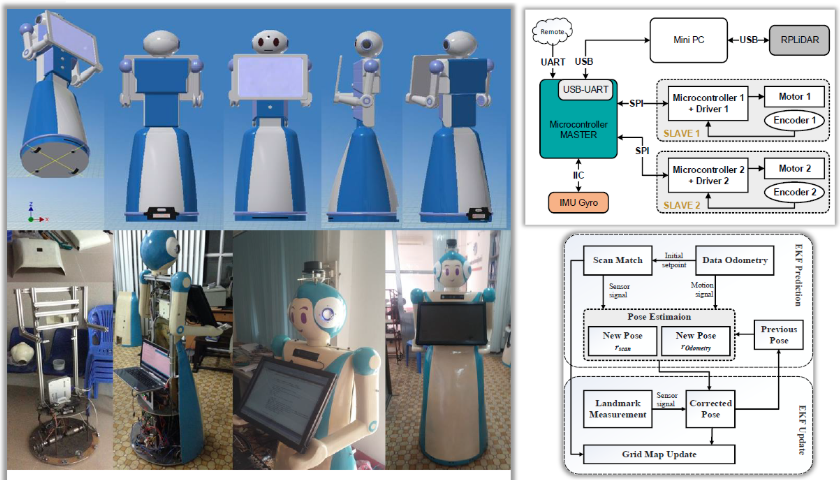
Technical Skills
[Programming Language] C++, Python, MATLAB, Embedded C, Arduino, Bash, Cmake, PLC. [Frameworks/Libraries] MQTT/REST API, Qt, Gym, PyTorch, Pygame, CVXOPT, Ipopt. [DevTools/Simulators]: ROS1/ROS2, RViz, Git, Docker, MORAI, Gazebo, Carla, MATLAB Simulink